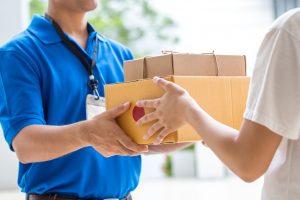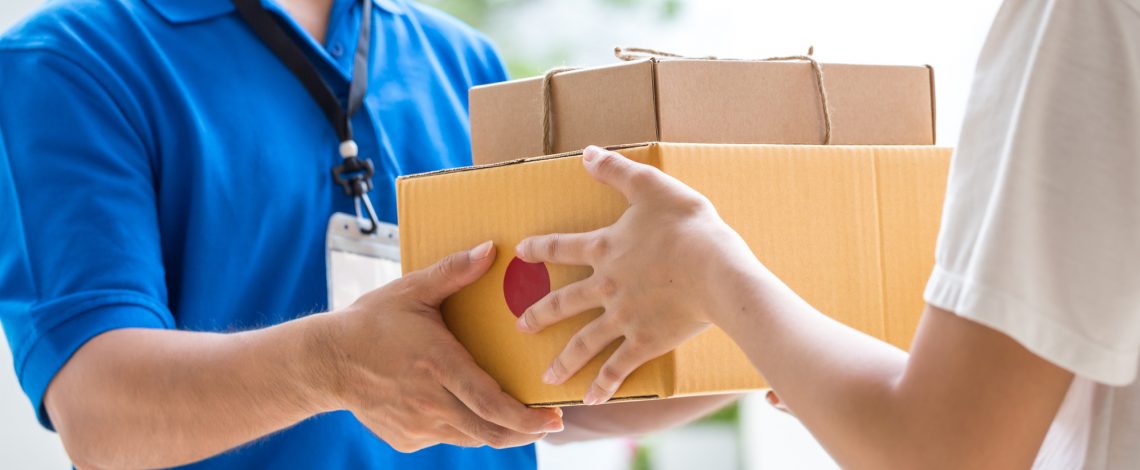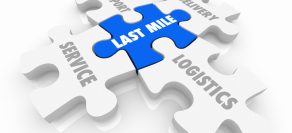
Last Mile Delivery
Estimates show that 28% of a product’s total transportation costs are in the last mile of delivery. The current trends in final mile delivery are in direct response to these high costs. Continue reading to learn more about last mile delivery trends and what more is in store for the industry.
9 Trends in Final Mile Delivery
The following trends are all about efficiency and lowering costs while trying to improve customer experience.
Faster Fulfillment and Delivery Speeds
With Amazon guaranteeing 2-day delivery, and other retailers following suit, faster fulfillment is required. Customers are now accustomed to 2-day delivery and expect it.
In some areas, Amazon even offers 2 hour delivery from Whole Foods with the Amazon Prime Now program.
This increase in demand has caused tremendous pressure in regards to last mile logistics.
City Warehouses
The location of warehousing has a direct impact on the speed of fulfillment. As demand for same day delivery has increased in major cities, warehouses have started to pop up among them.
Amazon’s Prime Now program has contributed to this trend. There are over 50 Prime Now hubs in the US to support the program.
Use of the Gig-economy
The explosion of the gig-economy has allowed retailers to outsource some of their last mile delivery services to independent contractors. These contractors complete local deliveries one package at a time on bikes or in their own cars.
Apps like UberRUSH, Postmates, and Amazon Flex provide such delivery services in certain areas, mostly limited to big cities.
Order Tracking
Being able to track a package is extremely important to a customer. It is important for them to be able to know when a package is supposed to arrive or even if it gets lost.
A tracking number is guaranteed with legacy carriers like UPS but regional and local last-mile delivery services sometimes aren’t able to offer the same.
Thanks to smartphone apps and the use of GPS, customers can see more specifically where the driver is and the moment the package is delivered.
Giving customers’ peace of mind helps to improve customer satisfaction.
E-Commerce Picks Up USPS
The US Postal Service was struggling for a few years due to the decline in mail delivery.
However, the increase in e-commerce package delivery has revived the USPS.
Adding a package delivery is a small cost to the USPS as they are stopping at the house anyway to deliver the customer’s mail. It is more expensive for other carriers to make that same stop since it is an independent stop.
The USPS has evolved in other ways too. They now offer Sunday deliveries and some companies have even moved to use the USPS for other nonconventional deliveries.
Lockers and Pick Up Sites
Some carriers now offer locker pick up as an alternative to delivering packages to their customers. Customers can choose instead go to a secured, self-service locker to pick up their package.
If a customer chooses to have a package delivered to a locker, they are sent a unique passcode which is used to open the locker.
Lockers help to mitigate lost and stolen packages. It is a more secure option as opposed to leaving a package at a customer’s front door.
This also saves companies money and time as many packages can be “delivered” at once and all at one location.
One company that has utilized this option is Amazon. Amazon Locker has over 2,000 locations in more than 50 cities.
Companies also now offer other pick up sites as another option for customers to receive their purchases.
One example is FedEx. They partnered with Walgreens to offer package pick up at certain locations.
Upsales at the Time of Delivery
Retailers are tracking our spending habits and, with the use of Big Data, can predict what other items we are likely to buy.
When shopping online, companies use this data to suggest other products that you may be interested in. This same concept will be used during deliveries.
Delivery people will bring additional inventory based on past purchases with the goal of making additional sales in person.
Smart Technology
Big Data is being used in other areas of last mile delivery services as well.
Data analytics are used to discover the best delivery routes and work in real time with traffic data and weather conditions. Routes are automatically adjusted to avoid traffic jams, road construction, etc.
Fulfillment centers also use weather data to determine how to pack certain items during different seasons.
This is especially important for temperature sensitive items like food or pharmaceuticals. Carriers can now monitor temperature with high tech devices which notifies the delivery person if the package is at an unsafe temperature.
Delivery by Self-Driving Cars, Drones, and Robots
Autonomous delivery is not far off in the future. It is estimated that self-driving trucks will be around in five to 10 years.
There are companies working on self-driving technology, like GM and Ford.
Once implemented, cars, vans, and trucks will be making plenty of stops. Its estimated that by 2025, 80% of items will be delivered by an autonomous vehicle.
Pilot programs are in effect to work out the kinks of using drones and robots for deliveries.
Robot delivery is being tested in San Francisco for Yelp Eat24.
In the UK, Amazon Prime Air conducted private drone trials. Once Prime Air goes live, Amazon promises to deliver packages in 30 minutes or less.
Of all the trends, autonomous delivery is set to save companies the most money in the last mile of delivery.
Wrapping Up
The final mile of delivery gets a lot of attention and rightfully so.
With all the changes in the shipping industry, it is important to have a courier you can rely to make sure your packages get to their destination on time.
We know and follow the trends in final mile delivery and we can help.
Need it Now Delivers! offers last mile home delivery as well as a number of other delivery services.
Contact us today and get a quick quote for delivery services you need.



